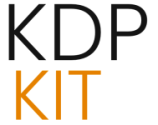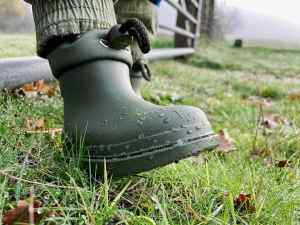How to Find Beta Readers for Your Book Before a KDP Launch

Preparing your book for a Kindle Direct Publishing (KDP) launch involves numerous crucial steps, and one of the most impactful is securing a team of beta readers. Beta readers provide invaluable feedback from a reader’s perspective, helping you identify plot holes, inconsistencies, pacing issues, and areas that need refinement before your book reaches the wider public. This tutorial will guide you through the process of finding, engaging, and working with beta readers to ensure your book is polished and ready for a successful launch.
Understanding the Role of Beta Readers
Before diving into the search, it’s essential to understand what a beta reader is and what they are not. A beta reader is an early reader of your manuscript who offers constructive feedback to help improve the book before publication. They are not professional editors, proofreaders, or critique partners, although some may possess these skills. Their primary role is to provide an honest, reader-centric reaction to your manuscript, highlighting what works and what doesn’t from their point of view. This feedback is crucial for identifying issues that the author, too close to the work, might miss. Beta readers help point out errors, inconsistencies, and plot holes, offering an overall reader reaction.
It’s important to distinguish beta readers from other roles in the publishing process:
- Alpha Readers: These readers engage very early in the process, often with a rough draft, providing feedback on fundamental elements like story structure and character arcs.
- Critique Partners: These are typically fellow writers who exchange critiques, offering feedback from both a reader and writer standpoint.
- Advance Reader Copy (ARC) Readers: ARC readers receive a near-final version of the book shortly before launch to generate early buzz and reviews. Their role is more focused on marketing and review generation than developmental feedback.
- Editors/Proofreaders: These are professionals who focus on technical aspects like grammar, spelling, punctuation, and stylistic consistency. Beta readers do not perform these tasks.
Why Beta Readers Are Crucial for Your KDP Launch
Beta readers are an indispensable part of the book development process, especially for authors utilizing Amazon KDP. Their feedback can:
- Identify Plot Holes and Inconsistencies: Beta readers can spot narrative gaps or continuity errors that you might have overlooked.
- Improve Pacing and Flow: They can indicate sections where the story drags or feels rushed, helping you adjust the pacing for a more engaging read.
- Develop Characters: Beta readers can offer insights into character motivations, believability, and reader connection.
- Enhance Dialogue: They can point out dialogue that sounds unnatural or doesn’t serve the story.
- Gauge Reader Reaction: Crucially, they provide a preview of how your target audience will react to your book, helping you refine the narrative to resonate better.
- Build Early Buzz: While not their primary role, engaged beta readers can become early advocates, spreading the word about your upcoming book.
By incorporating beta reader feedback, you can significantly improve your manuscript’s quality, leading to better reviews and a stronger launch on KDP.
How Many Beta Readers Do You Need?
The optimal number of beta readers can vary, but a common recommendation is between 3 to 5 readers. This range allows for diverse perspectives without becoming overwhelming with contradictory suggestions. Too few readers might miss crucial issues, while too many can lead to confusion. Some authors opt for more, even a dozen, depending on their network and the depth of feedback they seek. Ultimately, the goal is to gather enough varied opinions to feel confident in your manuscript’s readiness for the next stage, such as professional editing.
Where to Find Beta Readers
Finding beta readers involves tapping into various communities and platforms. It’s beneficial to seek readers who are genuinely interested in your genre, as their feedback will be more pertinent and enthusiastic.
1. Your Existing Network
Start by reaching out to friends, family, and acquaintances who are avid readers, especially those who enjoy your genre. However, be mindful that personal connections might lead to biased feedback. If you choose this route, prioritize those who can offer honest, constructive criticism.
2. Online Writing Communities and Forums
These communities are rich with authors and readers who understand the value of feedback. They are excellent places to connect with potential beta readers.
- Facebook Groups: Search for groups dedicated to beta reading or writing, such as “Beta Readers and Critique Partners” or genre-specific writing groups.
- Reddit: Subreddits like r/BetaReaders, r/Writing, and r/SelfPublish are valuable resources. Be clear about your genre, word count, and the type of feedback you need when posting.
- Goodreads Groups: Join genre-specific groups or those focused on beta reading and ARCs.
- Discord Servers: Many writing-focused Discord communities have dedicated channels for finding beta readers or critique partners.
- Absolute Write: This long-standing forum has sections dedicated to beta reader exchanges.
- Scribophile: A community for writers to share and critique each other’s work, also a place to find beta readers.
- Critique Circle: This platform facilitates the exchange of feedback among writers.
- Nathan Bransford’s Forum: A forum created by author Nathan Bransford, connecting writers with beta readers.
3. Dedicated Beta Reader Platforms
Several platforms are specifically designed to connect authors with beta readers, streamlining the process and often allowing you to filter readers by genre or experience.
- BetaReader.io: This platform matches authors with beta readers and offers tools for feedback management.
- BookSirens: Connects authors with beta readers and assists with feedback collection.
- StoryOrigin: Offers tools for finding beta readers and managing campaigns.
- HeyBeta: A paid platform offering a secure way to share your manuscript.
4. Social Media Platforms
Beyond dedicated writing groups, general social media can be a source for beta readers.
- Instagram: Use hashtags like #betareaders or #writingcommunity to connect with readers and writers.
- Threads: This platform can also be effective for reaching potential beta readers.
5. Your Email List
If you have an existing email list, your subscribers are a prime source for beta readers, as they’ve already shown interest in your work. Offer them early access or exclusive content in exchange for their feedback. Building an email list with a compelling reader magnet (like a free short story) can attract engaged readers who are eager to serve as beta readers.
6. Paid Beta Reading Services
For a more structured approach or if you’re struggling to find volunteers, consider paid services.
- Fiverr: This gig platform hosts numerous beta readers with varying experience levels and prices. It’s advisable to check reviews and ask about their experience.
- Upwork and Freelancer.com: These platforms also offer readers who provide beta reading services.
Preparing Your Manuscript and Request
Once you’ve identified potential beta readers, you need to prepare your manuscript and craft a clear request.
1. Manuscript Preparation
Your manuscript should be as polished as possible before sending it to beta readers. While they are not editors, a clean manuscript allows them to focus on the story rather than typos and grammatical errors. Ensure your manuscript is formatted clearly, ideally as a Word document or PDF. Some authors prefer to send their entire manuscript at once, while others send it in chapters to avoid overwhelming readers.
2. Crafting Your Beta Reader Request
When reaching out, be professional, clear, and appreciative. Include essential information:
- Genre, Title, and Word Count: This helps readers determine if your book is a good fit for their reading preferences.
- Elevator Pitch: A brief summary of what makes your story unique.
- Blurb: A compelling synopsis of your book.
- What Feedback You’re Looking For: Be specific about the types of feedback you need (e.g., plot, characters, pacing, overall enjoyment).
- Your Timeline: Clearly state the deadline for feedback.
- Format: Specify how you will deliver the manuscript (e.g., e-book, PDF).
- Incentives (Optional): Consider offering a free copy of the final book, a mention in the acknowledgments, or other small tokens of appreciation.
You can use tools like Google Forms to create an application for potential beta readers, allowing you to screen them based on genre preference, reading habits, and commitment.
Working Effectively with Beta Readers
Building a positive and productive relationship with your beta readers is key to receiving valuable feedback.
1. Set Clear Expectations
Communicate your expectations regarding the timeline, the depth of feedback, and how the feedback will be used. Be clear that their feedback is valuable and will be considered seriously.
2. Be Professional and Appreciative
Treat your beta readers with respect and gratitude. They are volunteers, so avoid rushing them. Regular check-ins and expressing thanks can go a long way.
3. Provide Specific Questions
While a “clean read” is important, providing a list of specific questions can help guide their feedback. Ask about plot points, character motivations, pacing, and overall enjoyment. You can also schedule interviews or use feedback forms to gather structured responses.
4. Respect Their Time and Opinions
Understand that beta readers have their own lives and commitments. Deliver feedback in manageable portions if needed. When you receive their feedback, review it thoughtfully. Look for patterns in their opinions, as this can highlight recurring issues.
5. Implement Feedback Thoughtfully
Show your beta readers that their input is valued by implementing their suggestions where appropriate. You don’t have to agree with every suggestion, but demonstrating that you’ve considered their feedback can strengthen your relationship.
6. Stay in Touch
Maintain contact with your beta readers even after the project is complete. Keep them updated on your progress and invite them to join your ARC team for future releases. This can help build a loyal group of readers for your ongoing writing career.
Transitioning from Beta Readers to ARC Teams
Once you’ve incorporated beta reader feedback and your manuscript is nearing its final form, you can begin building your Advance Reader Copy (ARC) team. ARC readers are crucial for generating early reviews and buzz around your KDP launch. While beta readers focus on manuscript improvement, ARC readers focus on providing reviews on platforms like Amazon and Goodreads.
The timeline for recruiting ARC readers typically begins several months before your launch date.
- 6 Months Out: Begin recruiting ARC readers and researching influencers.
- 4-6 Months Out: Send the formatted book to ARC readers.
- 1-3 Months Out: Continue communication and secure reviews.
- Launch Month: Activate your launch team and provide promotional materials.
Your beta readers, if they enjoyed the process and your book, can be excellent candidates for your ARC team.
Conclusion
Finding and working with beta readers is a vital step in preparing your book for a KDP launch. By understanding their role, knowing where to find them, preparing your request carefully, and fostering strong relationships, you can leverage their feedback to significantly enhance your manuscript. This process not only polishes your book but also builds a foundation of support for your launch and future writing endeavors.









